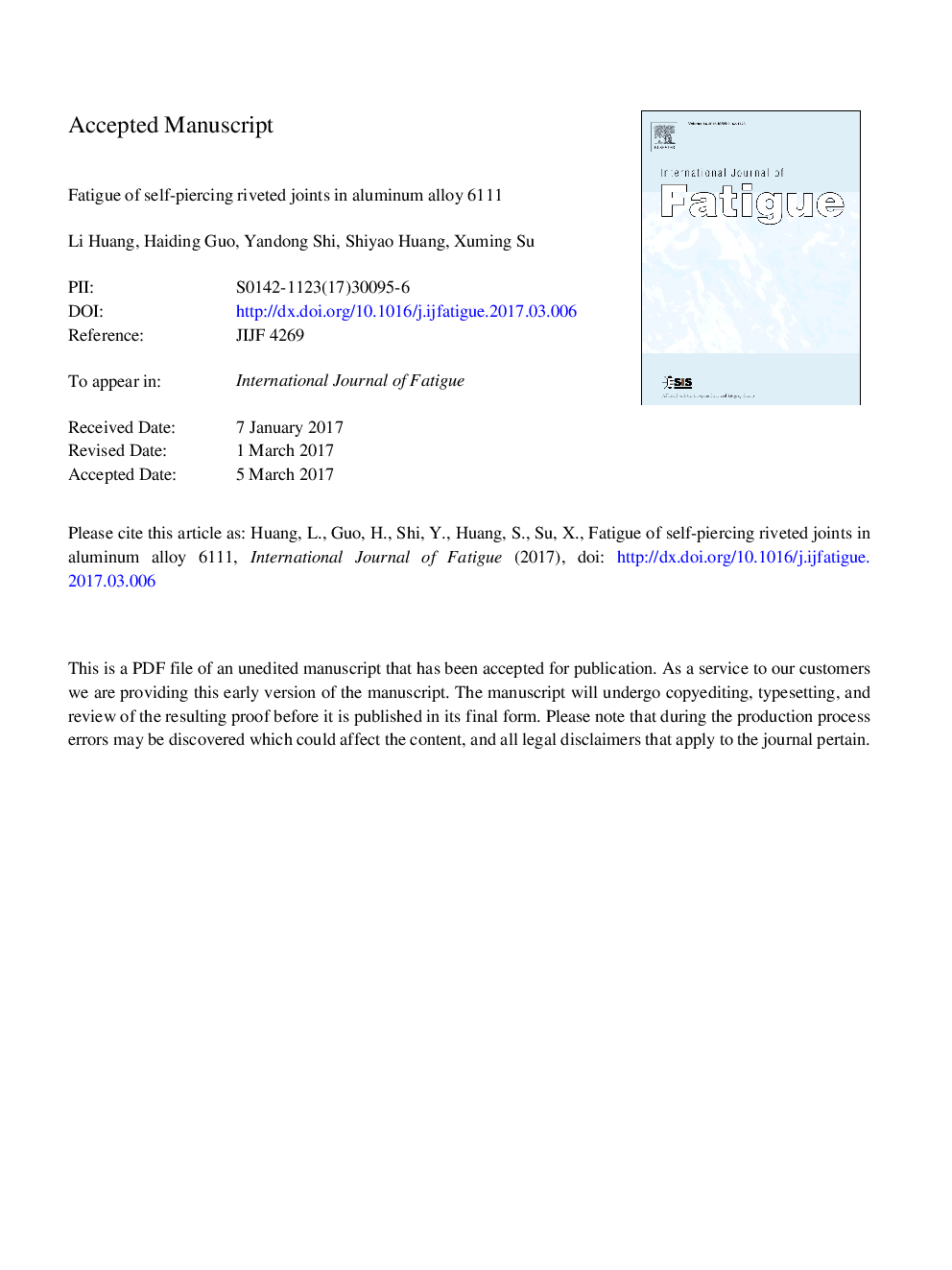| Article ID | Journal | Published Year | Pages | File Type |
|---|---|---|---|---|
| 5015137 | International Journal of Fatigue | 2017 | 21 Pages |
Abstract
The fatigue behavior of self-piercing riveted (SPR) joints of aluminum alloy 6111-T4 has been experimentally and numerically investigated in current study. The dominant fatigue failure mode under tensile-shear (TS) loading is the corner crack at riveted hole with approximate quarter-elliptical crack front, and interrupted tests revealed that the crack growth life was much shorter than crack initiation life. A fatigue parameter, Smith-Watson-Topper (SWT) was proposed for crack initiation prediction in the 3D finite element analysis, while a structural load based crack growth approach was introduced for crack growth life estimation. Good agreement was found between predictions and experimental results.
Related Topics
Physical Sciences and Engineering
Engineering
Mechanical Engineering
Authors
Li Huang, Haiding Guo, Yandong Shi, Shiyao Huang, Xuming Su,
